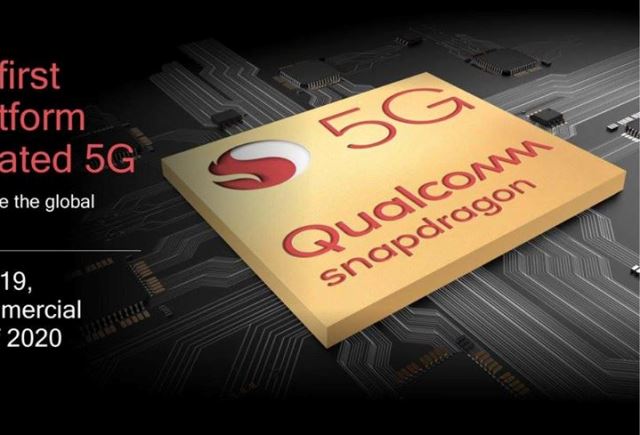Qualcomm Technologies announced the Snapdragon X60 5G Modem-RF System, its third-generation 5G modem-to-antenna solution (the Snapdragon X60).

The chipset supplier said Snapdragon X60 features the world’s first 5-nanometer 5G baseband and is the world’s first 5G Modem-RF System to support spectrum aggregation across all key 5G bands and combinations, including mmWave and sub-6 using frequency division duplex (FDD) and time division duplex (TDD).
This 5G modem-to-antenna solution is designed to enhance the performance and capacity for operators while increasing average 5G speeds in mobile devices. Snapdragon X60 is designed to accelerate network transition to 5G standalone mode through support for any key spectrum band, mode or combination, along with 5G Voice-over-NR (VoNR) capabilities.
Snapdragon X60 features new Qualcomm QTM535 mmWave antenna module, engineered for superior mmWave performance. QTM535, the company’s third-generation 5G mmWave module for mobile, features a more compact design than the previous generation which allows for thinner, sleeker smartphones.
“As 5G standalone networks are introduced in 2020, our third-generation 5G modem-RF platform brings extensive spectrum aggregation capabilities and options to fuel the rapid expansion of 5G rollouts while enhancing coverage, power efficiency and performance for mobile devices,” said Cristiano Amon, president, Qualcomm.
Snapdragon X60 allows for fiber-like internet speeds and low latency, delivered wirelessly over 5G, which will help unlock the next generation of connected applications and experiences, from highly responsive multiplayer gaming and immersive 360-degree video to connected cloud computing.
The Snapdragon X60 is the world’s first to support mmWave-sub6 aggregation allowing operators to maximize their spectrum resources to combine capacity and coverage.
The Snapdragon X60 contains 5G FDD-TDD sub-6 carrier aggregation solution, in addition to supporting 5G FDD-FDD and TDD-TDD carrier aggregation, along with dynamic spectrum sharing (DSS).
Mobile operators will have a range of deployment options – including the ability to use LTE spectrum for 5G – to effectively deliver higher average network speeds and accelerate 5G expansion.
This 5G modem-to-antenna solution can deliver up to 7.5 Gbps download speeds and 3 Gbps upload speeds, and the aggregation of sub-6 GHz spectrum in standalone mode allows the doubling of peak data rates in 5G standalone mode compared to solutions with no carrier aggregation support.
VoNR support in Snapdragon X60 will be an important step in the global mobile industry’s transition from non-standalone to stand-alone mode, as it will allow mobile operators to provide high-quality voice services on 5G NR.
Qualcomm Technologies is scheduled to ship samples of Snapdragon X60 and QTM535 in the first quarter of 2020, with commercial premium smartphones using the new Modem-RF System expected in early 2021.





